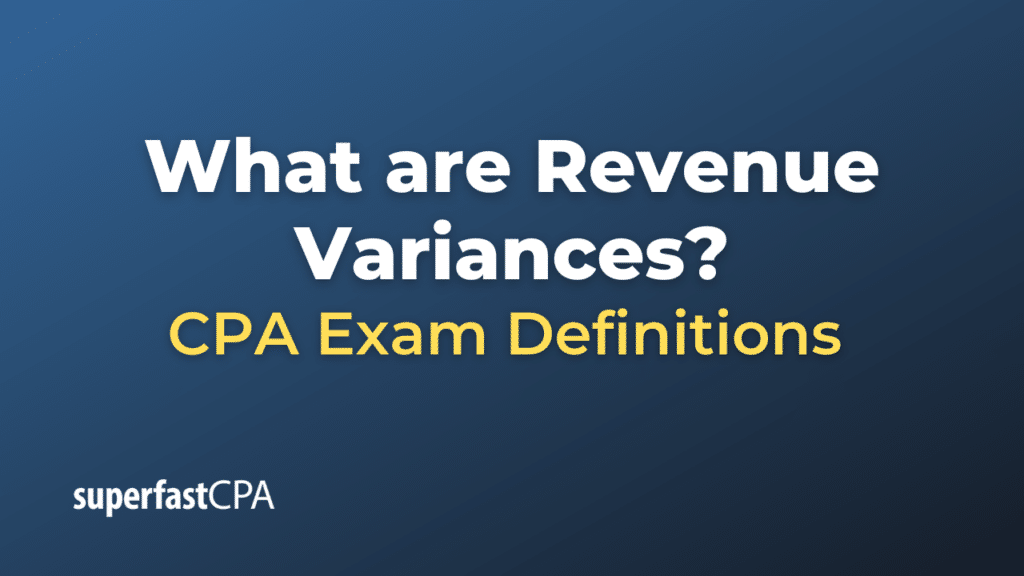Revenue Variances
Revenue variances refer to the differences between the actual revenue earned by a business during a particular period and the forecasted or budgeted revenue for that same period. Analyzing these variances can provide valuable insights into the company’s performance, the accuracy of its forecasting processes, and areas that may need managerial attention.
There are primarily two types of revenue variances:
- Sales Volume Variance: This variance measures the difference between the actual number of units sold and the budgeted or expected number of units, multiplied by the standard selling price. It indicates whether a company sold more or fewer units than anticipated.
- Formula: Sales Volume Variance = (Actual Units Sold − Budgeted Units) × Standard Selling Price
- Sales Price Variance: This variance measures the difference between the actual average selling price and the standard selling price, multiplied by the actual number of units sold. It reflects whether a company received more or less revenue per unit than anticipated.
- Formula: Sales Price Variance = (Actual Selling Price − Standard Selling Price) × Actual Units Sold
Example of Revenue Variances
Lovely Lamps Inc. is a company that sells decorative lamps. For the month of April, the company budgeted to sell 500 lamps at a price of $100 each. However, actual sales for April showed that 550 lamps were sold at an average price of $95 each.
Given these figures, let’s calculate the Sales Volume Variance and Sales Price Variance.
- Expected Revenue: 500 lamps x $100 = $50,000
- Actual Revenue: 550 lamps x $95 = $52,250
Sales Volume Variance:
The formula is: (ActualUnitsSold − BudgetedUnits) × StandardSellingPrice
(550 – 500) x $100 = 50 lamps x $100 = $5,000
The positive value indicates a favorable variance. Lovely Lamps Inc. sold 50 lamps more than expected, leading to an additional $5,000 in revenue.
Sales Price Variance:
The formula is: (ActualSellingPrice − StandardSellingPrice) × ActualUnitsSold
($95 – $100) x 550 = -$5 x 550 = -$2,750
The negative value indicates an unfavorable variance. Though Lovely Lamps Inc. sold more lamps, they sold each lamp for $5 less than the budgeted price, resulting in $2,750 less revenue than if they had maintained the standard selling price.
Overall Analysis:
Although Lovely Lamps Inc. had a positive sales volume variance, it was offset by the negative sales price variance. The combined variances ($5,000 – $2,750) resulted in a net favorable variance of $2,250. This means the company earned $2,250 more in revenue than expected, even after considering the reduced selling price.
Management can use this information to investigate why the average selling price was lower than expected. Perhaps there was a promotional discount, or maybe competition forced prices down. Understanding these variances helps inform future pricing and sales strategies.













